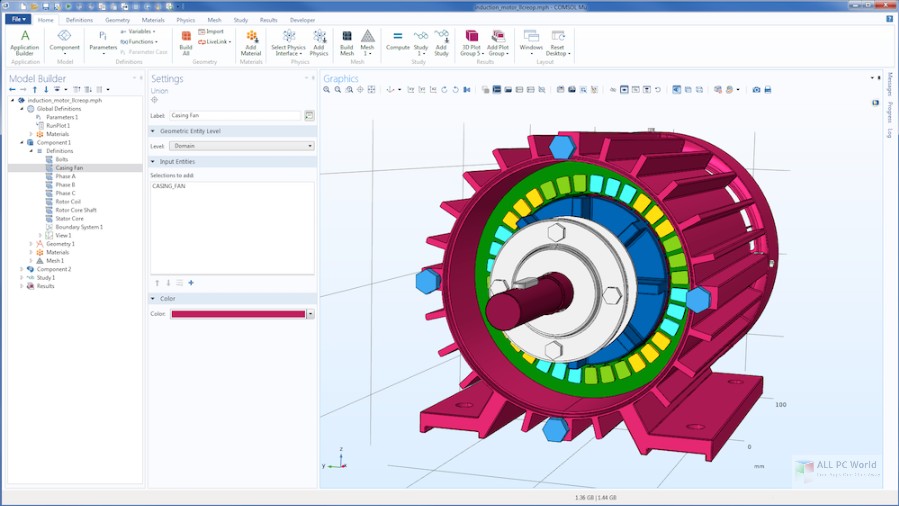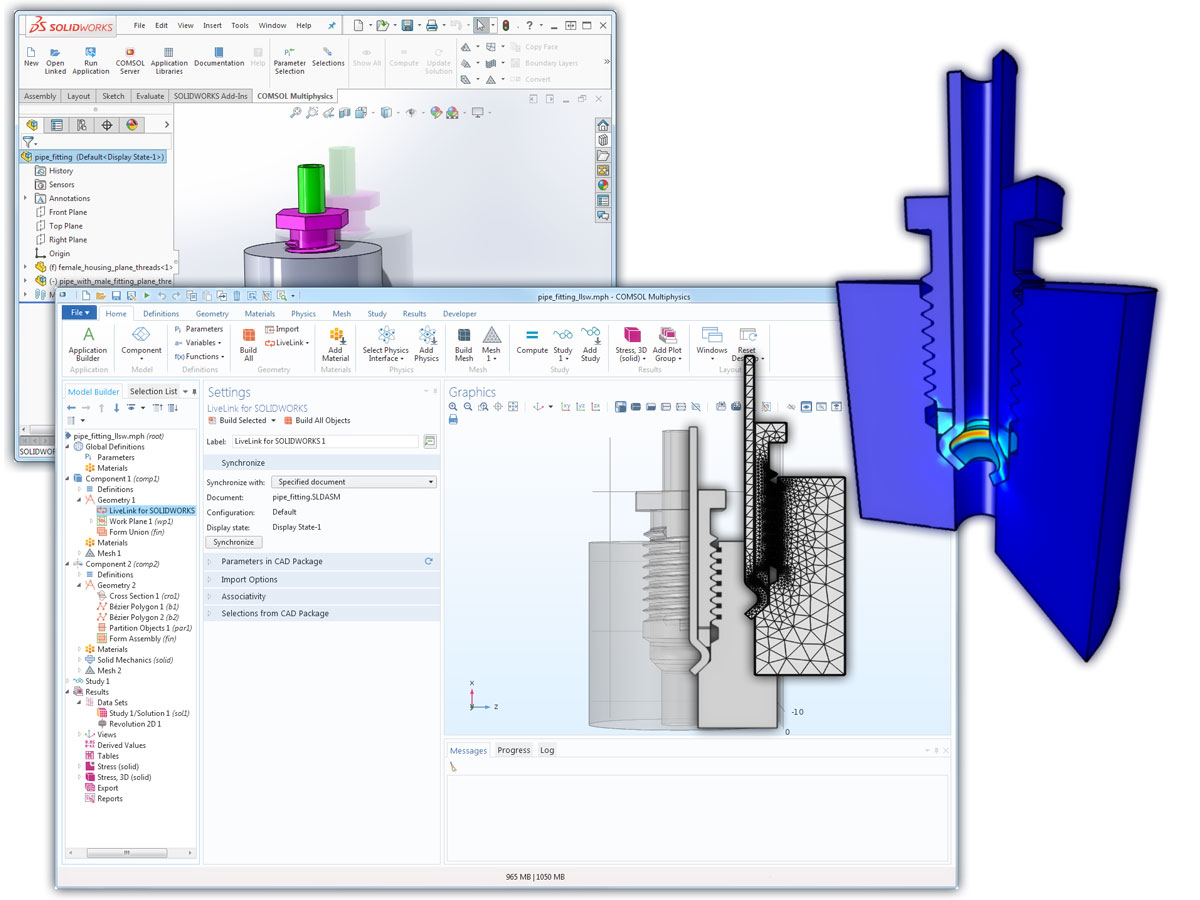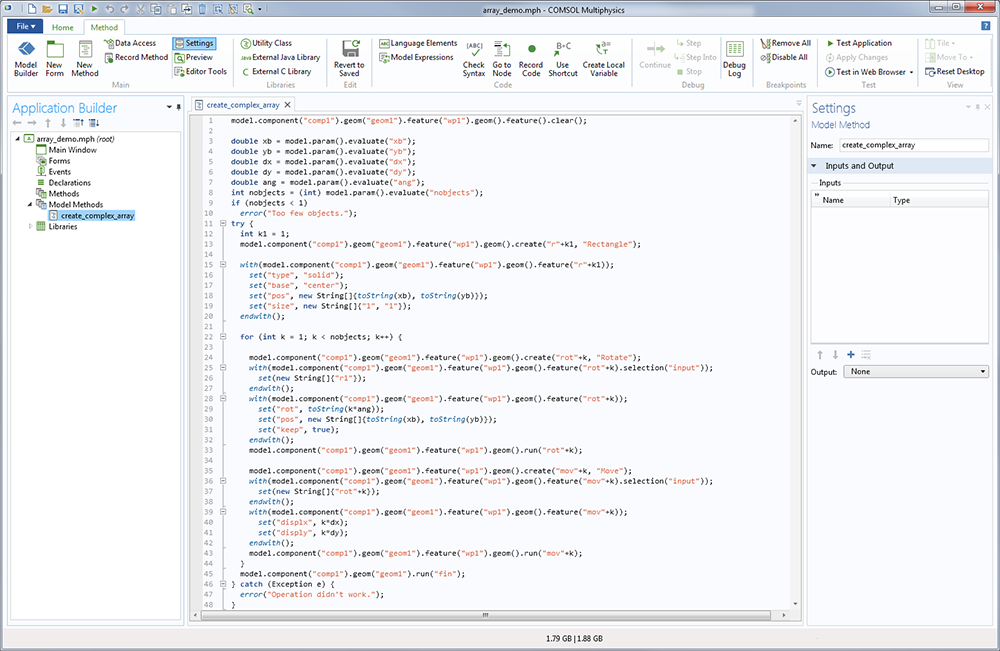

As a replacement of an FEM-based radiation condition or an FEM-based perfectly matched layer (PML).Large fluid domains that would otherwise need an FEM-based volumetric mesh.

Typical cases where using the new BEM-based interfaces is advantageous: This significantly reduces the need for creating large volumetric meshes, making the BEM-based interfaces especially useful for modeling radiation and scattering problems with complex CAD geometries. When using BEM, only the surfaces adjacent to the modeling domain of interest need to be meshed. For example, the interior of a vibrating structure can be modeled with FEM, which allows for more general material properties, whereas the exterior domain is modeled with BEM, which is better suited for modeling large or infinite domains. With this hybrid approach, you can use the best suited method, FEM or BEM, where needed. This includes coupling to vibrating structures, via the Acoustic-Structure Boundary multiphysics coupling, and coupling to FEM acoustic domains, via the new Acoustic BEM-FEM Boundary multiphysics coupling. The image to the left shows the sound pressure level, while the image to the right shows the deformation of the array (there is constant phase shift applied for each row).Īdditionally, with COMSOL Multiphysics ® 5.3a, you can seamlessly couple the boundary elements interface with the physics interfaces that are based on the finite element method (FEM).


In this model, a "sound-hard" sphere is placed roughly 30 wavelengths away from the source. The results are compared to direct numerical simulation (DNS) data from the published literature.Interaction between the tonpilz sonar array and a scattering object. To show how the particle inertia affects the distribution of particles downstream in the channel, a Parametric Sweep is run over six different values of the Stokes number. Particles of sufficiently high inertia tend to cluster close to the wall because of their ability to cross between different eddies in the flow. This example shows how inhomogeneous, isotropic turbulence in the wall region affects the particle motion. The CRW model perturbs the drag force on the particles in random directions based on the turbulent kinetic energy and turbulent dissipation rate of the fluid. To couple such a flow field to the particle tracing simulation and still account for turbulent dispersion, a continuous random walk (CRW) model is used. The fluid velocity is computed using a Reynolds-Averaged Navier-Stokes (RANS) model and, as a result, the individual eddies of the flow are not explicitly modeled. This tutorial model demonstrates some of the phenomena that occur when particles move through a turbulent channel flow. New Benchmark Model: Particle Dispersion in a Turbulent Channel Flow Alternatively, use the Thermal Re-Emission wall condition to model molecules that get adsorbed at the boundary and then immediately reemitted into the domain with different speeds based on the surface temperature.įrom left to right: Hexapolar grids containing two, five, and ten rings of points. Use the Thermal velocity distribution, available with the Inlet feature, to sample released particle speeds from the distribution. Two variants of this feature are available. Unlike other available particle-wall interactions, such as the diffuse or specular reflection, the new Thermal Re-Emission boundary condition samples the particle speed from a distribution, not just the direction of the velocity vector. You can now release particles or reinitialize particle velocity at a boundary by sampling their speeds from a thermal distribution based on wall temperature. The new settings for periodic electric and magnetic forces are more compatible with such general periodic fields.Īpplication Library path: Plasma_Module/Capacitively_Coupled_Plasmas/ccp_ion_energy_distribution_function Thermal Distribution of Particle Velocities from Boundaries Above is the potential from the tutorial CCP Ion Energy Distribution Function, which requires the Plasma Module, and a time harmonic potential for comparison. In plasma simulations, the electric potential is often periodic, but not time harmonic.


 0 kommentar(er)
0 kommentar(er)
